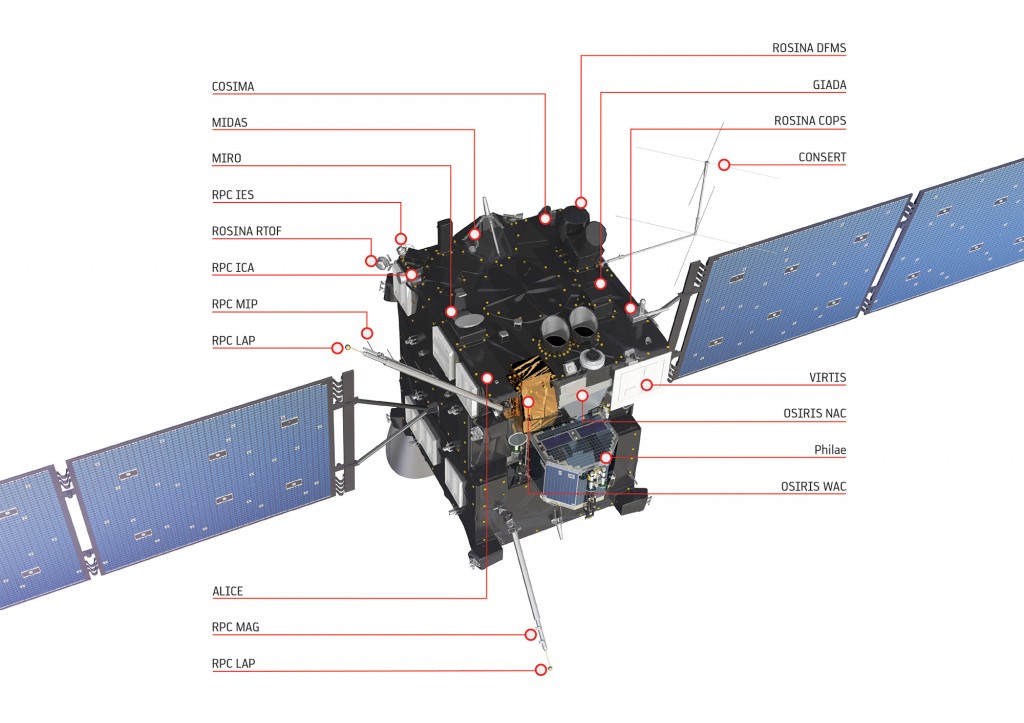Rosetta has 11 experiments onboard, many of which have names almost as long as a 140-character twitter message! But @ESA_Rosetta has come up with a handy tweet-per-instrument guide to what each one is and does, copied here for easy reference:
ALICE, Ultraviolet Imaging Spectrometer: analyses gases in comet coma & tail; CO, CO2 & H2O production rates; nucleus composition
CONSERT, Comet Nucleus Sounding Experiment by Radiowave Transmission: probes comet’s interior structure with Philae
COSIMA, Cometary Secondary Ion Mass Analyser: dust grain compositions
GIADA, Grain Impact Analyser & Dust Accumulator: measures number, mass, momentum & velocity distribution of dust grains from the nucleus
MIDAS, Micro-Imaging Dust Analysis System: dust environment and micro-imaging of dust size, volume & shape.
MIRO, Microwave Instrument for the Rosetta Orbiter: abundances of major gases, outgassing rates, gas velocities, nucleus subsurface temps
OSIRIS, Optical, Spectrocopic and Infrared Remote Imaging System: imaging the nucleus and the gas and dust coma.
ROSINA, Rosetta Orbiter Spectrometer for Ion & Neutral Analysis: composition of comet atmosphere & ionosphere; velocities of gas particles.
RPC, Rosetta Plasma Consortium: 5 sensors to measure properties of nucleus & inner coma, monitor activity, study interaction with solar wind
RSI, Radio Science Investigation: mass & gravity of nucleus to determine density & internal structure + study comet’s orbit
VIRTIS, Visible & Infrared Thermal Imaging Spectrometer: nature & temperature of surface; comet gases; physical conditions of the coma
For detailed information about the instruments, click here.
Coming soon… A tweeter’s guide to Philae’s instruments!










Discussion: one comment
Lika Electronic’s encoders are mounted on the OSIRIS WAC and NAC cameras to control shutter movement. You can get further information about our I38 SPACE encoder at https://www.lika.it/eng/file16.php?id_file=108. Regards.